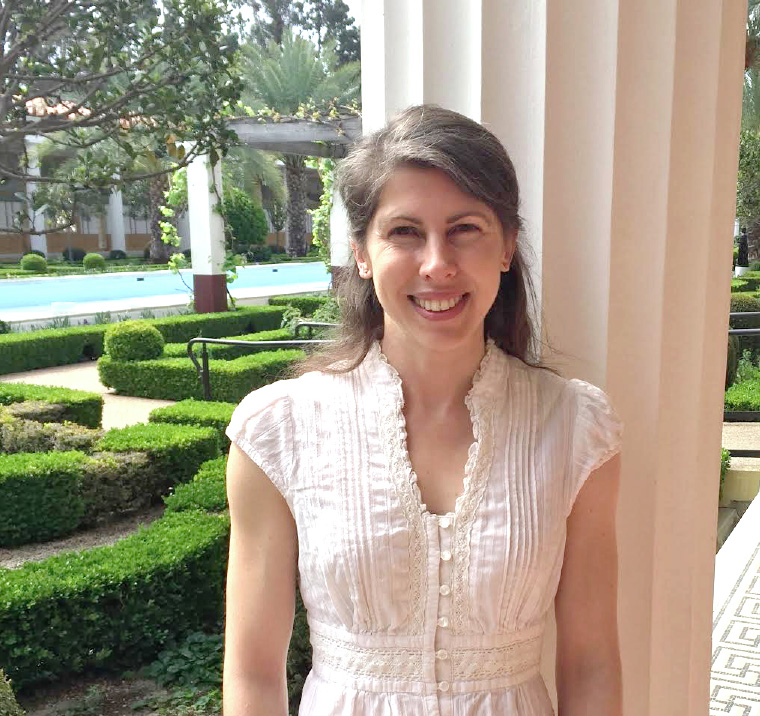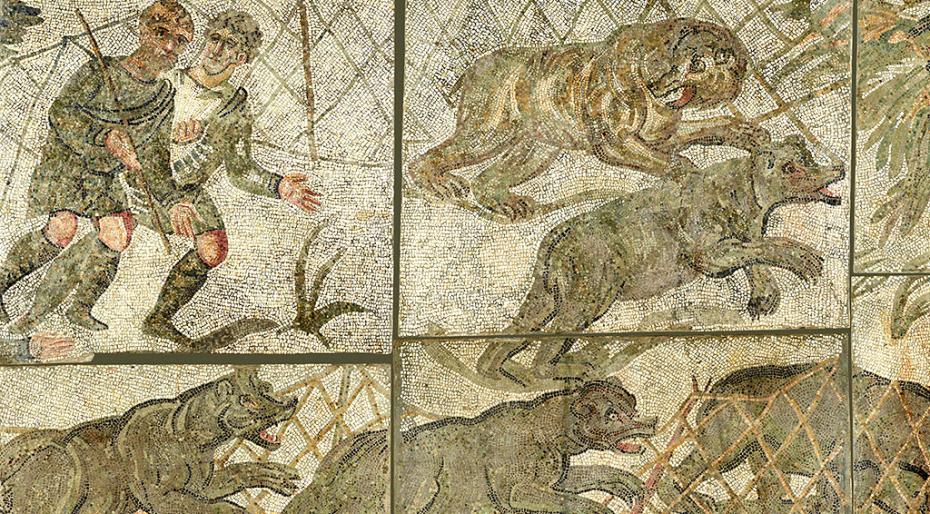Although, to date, the time machine is unfortunately just a sci-fi device, everybody can travel back to the past era of Roman Empire, simply by driving to the Getty Villa, in Malibu.
The new, exciting and comprehensive exhibition, Roman Mosaics across the Empire (March 30 – September 12), displays a range of exquisite mosaics, spanning from the 2nd through the 6th centuries A.D. Most of them, belong to the J. Paul Getty museum’s permanent collection, but they are now viewable to the public, for the first time.
It’s not going to be solely a time travel, but a geographical one, as well. In fact, the magnificent artworks, which used to adorn floors and walls of both private and public buildings, come from the major provinces of the Roman Empire: Gaul – in this case, the southern part, called “Gallia Narbonensis”; North Africa – in particular, “Africa Proconsularis”, coincident with present-day northern Tunisia, northeastern Algeria, and western Libya – and Syria – present-day Turkey and modern Syria.
Probably, the most incredible piece of art is a majestic floor mosaic, found in a vineyard near Lago di Lucrino in Baiae (just west of Naples), in 1901.
In 1971, the Getty Museum purchased twenty-tree panels of the mosaic, portraying a bear hunt. During the Roman Empire, aside from being a common figurative theme, “venationes” – the staged hunts of wild animals – were a popular form of entertainment, not unlike modern day’s bullfights in Spain.
I’ve had the opportunity to hear from the curator of this much anticipated exhibition, Alexis Belis, who, since a very early age, has always loved digging in the dirt, with the hope of unearthing some precious artefact.
A Princeton graduate and PhD in classical archaeology, Alexis’ dream came true, as she took part to several excavations in Greece and on Cyprus.

What is your cultural background?
Many of my relatives on my mom’s side are German and still live in Germany, and most of my dad’s family was Ukrainian.
Some of my memories, growing up, involve exotic foods, because we would
have traditional German and Ukrainian dinners on different holidays.
What is your current position and how does your typical day looks like?
I’m an assistant curator in the Department of Antiquities at the J. Paul Getty Museum. When I began working here, two years ago, I never imagined that I would have the opportunity to put together my own exhibition, especially one on Roman mosaics.
Every day is different because there are so many people involved in the exhibition. I spend fractions of each day, working with different departments on various aspects of the exhibition -from conservation and photography of the mosaics, to the design of the exhibition and how the mosaics will be displayed.
I also research the artefacts and work with an editor to write and revise the gallery texts and labels, whom you read in the exhibition. I even spent a day in the recording studio, at the Getty Center, making an audio guide. However, my job is not always exciting, since I have to take care of a lot of paperwork and email correspondence, as well.
The past six weeks, I’ve spent most days in the galleries, while the mosaics, text panels, and wall graphics were being installed. There’s also an online publication on the Getty’s mosaics collection, available from March 30th on, so I’ve been carrying my laptop around and working on the final editing of that at the same time.
Looking at your bio, it’s evident that your main interest is in classical Greek civilization. What fascinates you about the exhibition at the Getty Villa, Roman Mosaics across the Empire?
The Getty’s collection of Roman mosaics is fascinating, because we know the locations where many of the objects were found. Nearly all of the mosaics in the exhibition have two stories – an ancient one and a modern one.
The exhibition looks at the original contexts of the mosaics, decorating the floors of villas, baths, and churches, but it also focuses on how they were discovered and excavated. As an archaeologist, it’s exciting to be able to present this kind of information for any ancient civilization.
Two of the mosaics even come from the same Roman villa near Villelaure, in southern France, but they have been kept apart until now.
For the first time, the Getty’s mosaic of the boxers Dares and Entellus (theme from Virgil’s Aeneid) and LACMA’s mosaic, featuring Diana and Callisto (from Ovid’s Metamorphoses), which were excavated in 1900, are reunited in the exhibition.
Thanks to the current exhibit, I’ve had the opportunity to exchange information related to the mosaics with current residents of Villelaure and the surrounding villages, including the results from new excavations of the same villa, that took place in 2006.
The exhibition is also particularly interesting because, although most of the mosaics are from the Getty’s own collection, some of them have never been on display before at the Villa.
What are the biggest challenges you’ve been facing in putting together this exhibition?
One of the biggest challenges has been coordinating the work of so many different departments, especially while putting together the publication of the Getty’s entire mosaic collection at the same time.
What are the distinctive characteristics of an institution, like The Getty, in terms of research, conservation etc…?
The Getty is an incredible place to work, because all of these resources are available in one place and this encourages collaborative projects. Every department, I’ve worked with, has been truly committed to the field and to the museum.
The Antiquities Conservation staff at the Villa has done an amazing job, in preparing the objects to display, and the Getty Conservation Institute (GCI) has also contributed to the exhibition, by presen-ting their MOSAIKON project at Bulla Regia in Tunisia.
The GCI’s material shows mosaics in situ, decorating the floors of houses and public buildings. This is especially important for an exhibition, in which all of the objects are displayed out of context.
You have lived in different cities around the world. Do you like residing in Los Angeles?
I really like living in Los Angeles. In particular, I love the mountains and being able to hike all year round. Also, the ocean and the mountains together remind me of Greece.





























